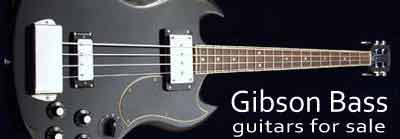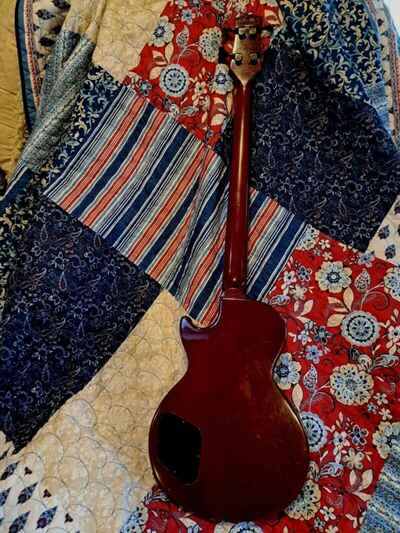• Honduras mahogany body • two low-impedance humbucking pickups • 30 1/2 inch scale • laminated mahogany set neck • rosewood fretboard
The Gibson Les Paul Triumph was another fantastic instrument produced at Gibson's legendary Kalamazoo factory in Michigan, USA, back in the days when this was their only plant. It was announced in late 1971, but probably not shipped until early 1972; this one shipped in the second half of that year. (See Les Paul bass shipping figures).
This is a fairly typical early seventies Triumph. The two-point bridge is an early feature; sometime in 1973 they got the three-point bridge, but sales declined throughout the decade, never reaching the levels of 1972-73, so two-point bridge Triumphs are not particularly unusual.
With regards other hardware, very little has changed from its predecessor, the Les Paul bass. Still Les Paul low-impedance bass humbuckers and Schaller M4 tuning keys. One significant difference was that the Triumph could be switched between low and high impedance (the Hi Lo output switch), but the other controls are identical, despite being layed out a little differently. This was a useful improvement, as the aforementioned Les Paul bass required a low-impedance amplifier or low-to-high impedance transformer cord when used out of the studio. The Triumph was also smaller, lighter, and more comfortable to play. This one weighs in at 4.9 kg.
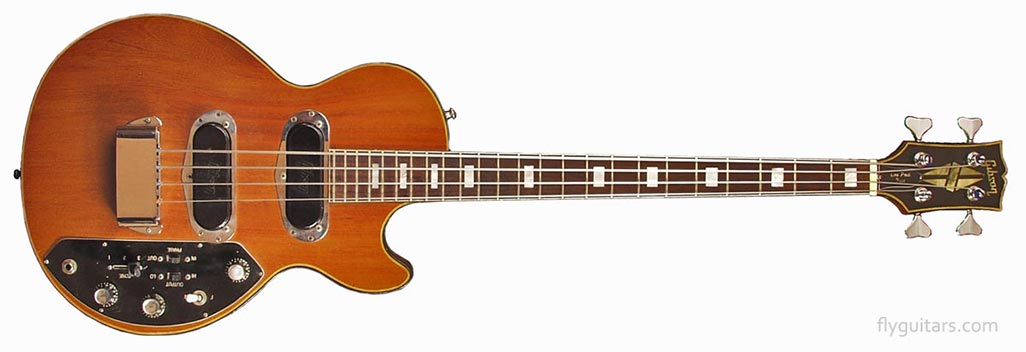
Although hardware is fairly similar, the level of ornamentation has increased since the Les Paul Bass. Block position marker inlays, body and neck binding and a split-diamond headstock inlay are all new high-end features, and the finish is now Natural Mahogany as opposed to the dark translucent Walnut of the Les Paul Bass.
The Triumph bass was initially only available in natural mahogany finish, although a very few may have been produced in the darker walnut brown of the earlier Les Paul Bass. The lacquer on this example has yellowed somewhat, giving an almost orange hue. From 1975 White was also available as a finish option, although these make up less than 10% of the total production.
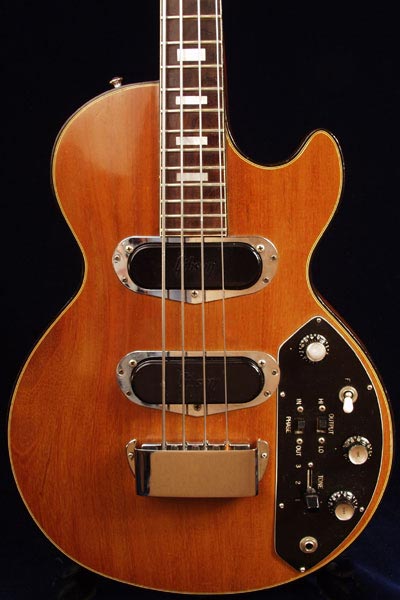
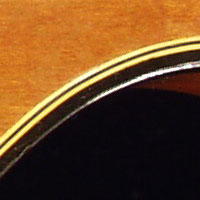 Translucent natural Mahogany was the only finish option available in for the Triumph bass until 1975, when White (solid) also became available. Both colour Triumphs had a bound front and neck, with multiple ply black/white body binding - as shown in the close-up image (right). The neck binding is also black and white, though just two ply.
Translucent natural Mahogany was the only finish option available in for the Triumph bass until 1975, when White (solid) also became available. Both colour Triumphs had a bound front and neck, with multiple ply black/white body binding - as shown in the close-up image (right). The neck binding is also black and white, though just two ply.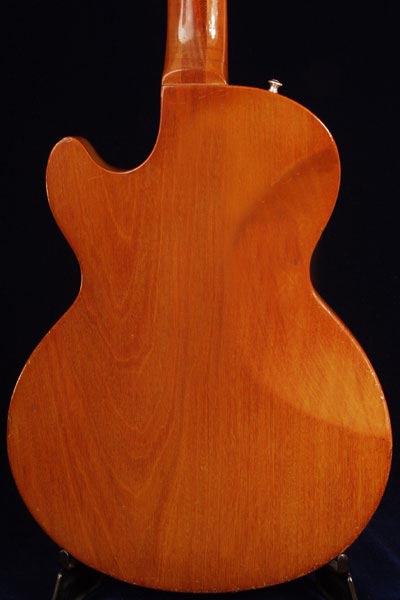
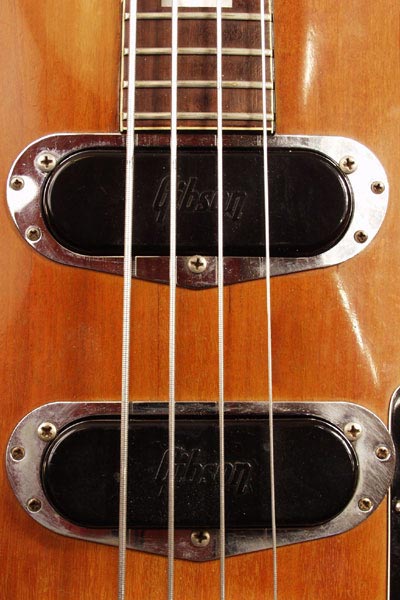
These were rather special pickups with an interesting 'stacked' coil arrangement. In effect, the number of turns of wire in each pickup could be changed (by electrically isolating some) using the tone switch. Position 1 used all windings for a very fat Gibson humbucker sound, positions 2 and 3 progressively removed turns from the circuit, making a significantly thinner sounding pickup. The differences between these tone settings are clearly audible in the sound clips of this bass here.
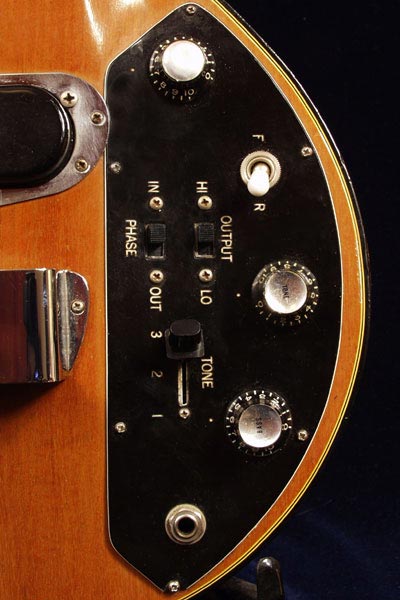
Unfortunately this plate is not as hard-wearing as perhaps it should be, often suffering damage around the output jack. Take care with your cables! Tripping, standing on them etc have all damaged Triumphs before. The controls themselves seem quite complicated, but offer a fantastic array of sounds; although often in a live situation players stick to a certain few settings most appropriate to them; for studio use, it is certainly worth exploring less-familiar tones. Again, some of these tonal options are demonstrated in the sound clips of this Triumph here. More on the precise function of the Les Paul Triumph controls from the original 1971 brochure here.
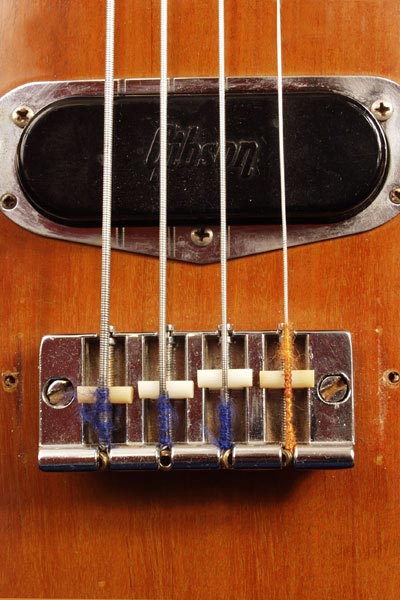
Note the two screw holes either side of the bridge - used for mounting the chrome two-point bridge
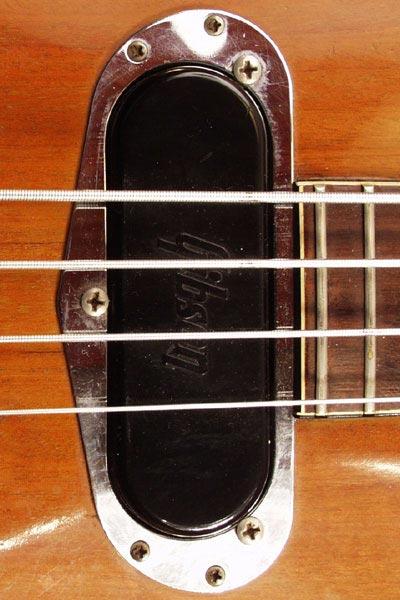
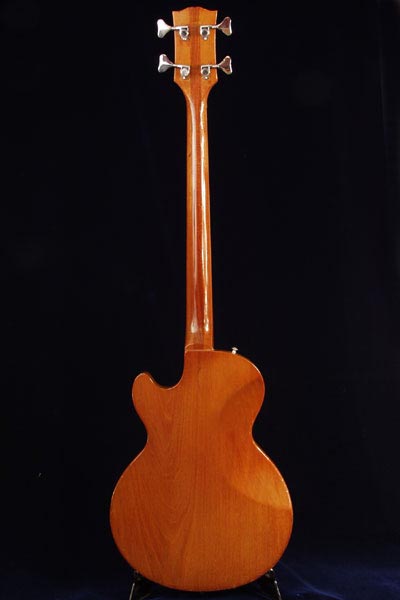
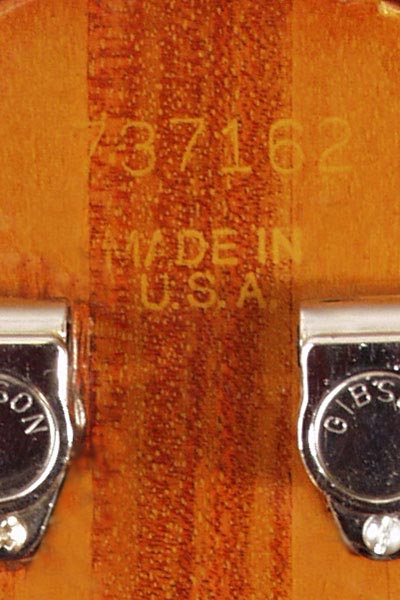
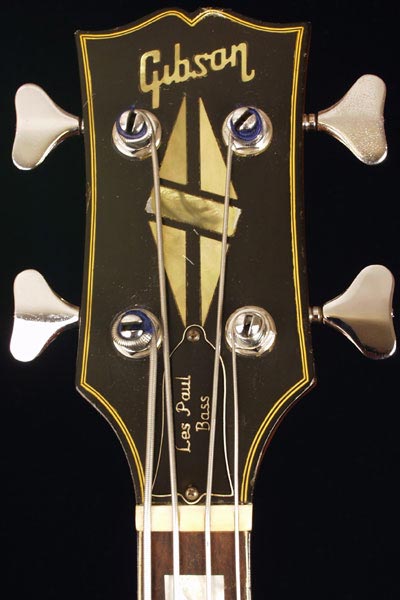
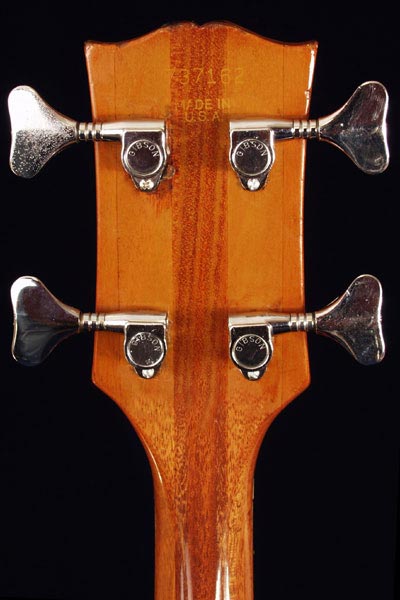
Sound Clips:
Recorded with Rotosound RS88LD Tru-bass tapewound strings (65-115) directly into a mobilepre USB external soundcard
Super Bass - A very mellow deep bass tone - and despite this the higher notes loose no clarity over the lower ones
Vol/Treb/Bass 10/10/10, front pickup, Tone-pos 3 (deep bass). Played finger style
Deep Bass - more top end, but plenty of rumble
Vol/Treb/Bass 10/10/10, both pickups - out of phase, Tone-pos 3 (high). Played finger style
Clear Bass - less rumble, more definition
Vol/Treb/Bass 10/4/6, both pickups - out of phase, Tone-pos 1 (high). Played finger style
Low - Midrange Bass - plenty of bottom, plenty of midrange
Vol/Treb/Bass 10/5/5, front pickup - out of phase, Tone-pos 2 (normal). Played finger style
Midrange - very clear bass sound
Vol/Treb/Bass 10/5/5, both pickups - out of phase, Tone-pos 3 (deep bass). Played finger style
Midrange - still plenty of authority
Vol/Treb/Bass 10/10/7, back pickup, Tone-pos 3 (high). Played finger style
Brighter midrange - a typical 'in phase' sound
Vol/Treb/Bass 10/10/10, both pickups - in phase, Tone-pos 1 (high). Played finger style
Bright and honky - a typical 'in phase' sound
Vol/Treb/Bass 10/10/10, both pickups - in phase, Tone-pos 2 (normal). Played with a pick
Gibson EB-3 bass guitars for sale
ORIGINAL VINTAGE 1970s Gibson Les Paul Triumph Recording Bass Walnut Orig. Case
West Islip, New York, 117**, UNITED STATES OF AMERICA
$3870
HAS AMAZING TONE AND SOUND WITH A REAL NICE SMOOTH FEEL AND ACTION ALL TUNERS, ELECTRONICS, GIBSON PICK UPS, SWITCHES, VOL , TONE. WORK REAL WELL ALSO AS SHOWN HAS A TINY HAIRLINE ON GUARD BY INPUT JACK CONSIDERING THIS GEM IS APPROX. 50 YEARS OLD AS SHOWN IN REAL NICE ORIGINAL CONDITION BUT TO BE EXPECTED TO HAVE SOME SCUFFS, SCRATCHES AND NORMAL USAGE WEAR .PLEASE ... more
gibson les paul bass guitar
Ronkonkoma, New York, 117**, UNITED STATES OF AMERICA
$1250
... more
1991 Gibson Les Paul Bass Guitar | Rare | Transparrent Red | Preowend | GITA
Mansfield, NG18***, UNITED KINGDOM
£1995
Hi there... I am trying to find parts for restoration of my Gibson LP Triumph Bass... any ideas? I need bridge, pick guard , Volume/Treble?bass knobs, machine heads and pick up covers/holders ... Any help gratefully accepted... Also can I find out the exact year of manufacture by the serial number? If so how? Have a great day! Thanks Paul


